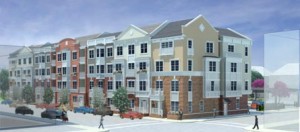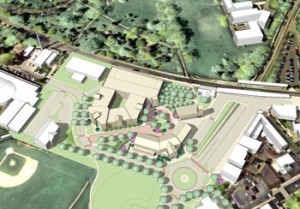3D Models: More than just pretty pictures
February 9th, 2011

The key to getting the most out of 3D is to integrate it into the design process and use it to tell a story that traditional techniques can not. Using massing models at a preliminary stage of the architectural design and urban planning processes is invaluable in describing scale of new buildings in existing context without being distracted by architectural style. At BartonPartners we use Sketchup as a design tool, creating massing and articulated models to facilitate both the architectural design and planning processes.

In its final stage, a photoreal 3D model set into existing context is a great tool to take to a planning board meeting to illustrate what flat elevations and plans can’t. Used in a marketing capacity, exterior models, interior models, and 3D floor plans generate excitement and sell something before it is built.
Let us work with you to use 3D models to explain, get approvals, and make a great design soar.
